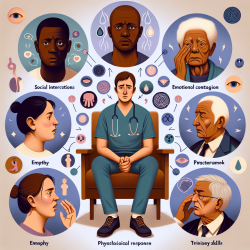Introduction
The Canadian Model of Client-Centered Enablement (CMCE) has long been a staple in occupational therapy, guiding practitioners in their interactions with clients. However, recent critiques, such as those presented in the research article "Critiquing the Canadian Model of Client-Centered Enablement (CMCE) for Indigenous Contexts," highlight the need for a critical reassessment of this model, particularly in Indigenous contexts. This blog explores the implications of this research and encourages practitioners to consider a more inclusive and culturally sensitive approach.
Understanding the Limitations of CMCE
The CMCE is designed to be client-centered, but it inadvertently perpetuates a hierarchical client-professional relationship. Concepts such as enable, advocate, educate, coach, and coordinate often reflect a paternalistic authority, which can be problematic in Indigenous contexts. The model's lack of reciprocity and power redistribution fails to align with Indigenous values of social interconnectedness and community collaboration.
Reimagining Health Care Relationships
To create more equitable and effective health care relationships, occupational therapists must critically reflect on their practices and embrace a model that supports social change and addresses colonial power inequities. This involves rooting practices in postcolonial views of health care as a social relationship, rather than a service provided by an expert to a passive client.
Implementing a Strengths-Based Framework
One proposed solution is to shift from a client-centered model to a strengths-based framework. This approach emphasizes the inherent strengths and resilience of Indigenous communities, fostering a more collaborative and empowering therapeutic relationship. By co-creating practice models with Indigenous Peoples, therapists can ensure that their interventions are relevant and respectful of Indigenous knowledge and cultural practices.
Practical Steps for Practitioners
- Engage in critical reflexivity to understand personal biases and the impact of colonialism on health care practices.
- Adopt cultural safety principles, ensuring that health care environments are welcoming and respectful of Indigenous clients.
- Collaborate with Indigenous communities to develop practice models and assessments that reflect Indigenous ways of knowing and being.
- Focus on power-sharing and reciprocity in therapeutic relationships, recognizing clients as active participants in their health care.
Conclusion
The journey toward reconciliation and culturally safe occupational therapy practices requires ongoing reflection and action. By critically examining the CMCE and embracing a strengths-based framework, practitioners can contribute to a more equitable health care system that respects and uplifts Indigenous communities. To read the original research paper, please follow this link: Critiquing the Canadian Model of Client-Centered Enablement (CMCE) for Indigenous Contexts.










